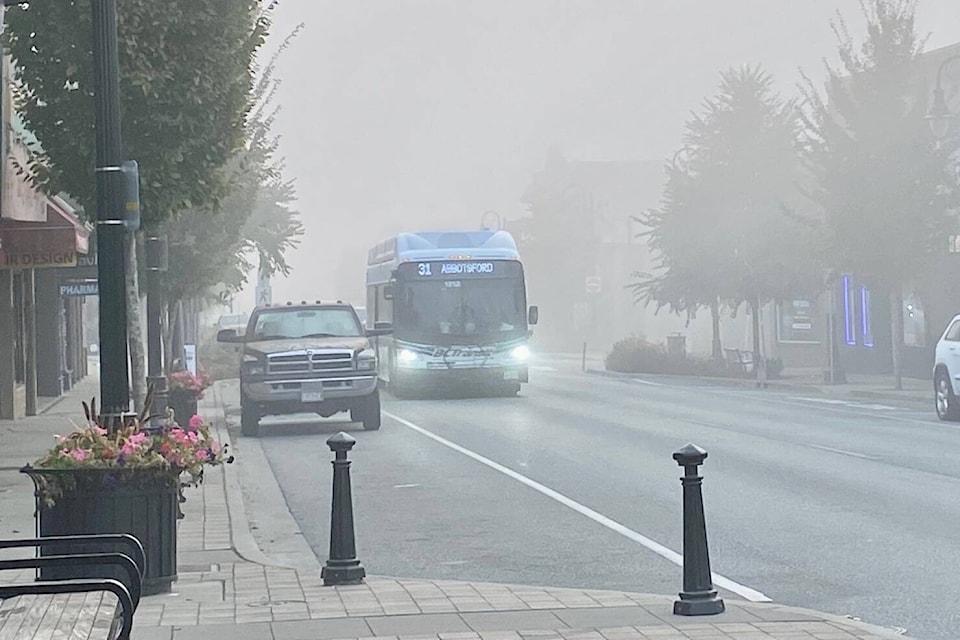Weather forecasters are predicting that we could see some rain starting Friday in Metro Vancouver and the Fraser Valley.
The rain is expected to continue for several days after that.
If this comes true, we’ll see the wildfires go out, our air quality clear up and the drought officially end.
But when that happens, we can’t just forget about what we are going through right now.
Take a look at the photo posted above.
It’s a smoggy nightmare that is having a serious impact on our personal health.
I’ve been waking up feeling like I’ve just smoked a pack of cigarettes thanks to all the wildfire smoke. A recent walk through downtown Mission had me gasping for air.
What we’ve been going through is not normal. It’s a product of human-caused climate change that is destroying the planet, which is why we keep seeing so many unusual weather events.
And it’s going to keep happening if we – the public and government leaders – don’t accelerate our actions.
It’s really that simple. We need to cut our dependence on fossil fuels.
Meanwhile, the Metro Vancouver Regional District is continuing an Air Quality Advisory for Metro Vancouver and the Fraser Valley that was issued October 14 because of high concentrations of fine particulate matter, primarily due to smoke from wildfires burning in B.C. and Washington.
The region’s air continues to be affected by wildfires burning southeast of Chilliwack (near Chilliwack Lake), near Hope, near Harrison Lake, and in Washington.
“Smoke concentrations may vary widely across the region with changes in wind, temperature, and wildfire behaviour,” says a news release. “Eastern parts of the Fraser Valley that are closer to many of the wildfires are experiencing greater smoke impacts compared to western parts of Metro Vancouver. Due to stagnant weather conditions, smoke is expected to remain until late Thursday and into Friday when a change in weather is anticipated to bring significant improvements in air quality.”
READ MORE: A Mission woman went to war with strata over a fence
Fine particulate matter, also known as PM2.5, refers to airborne solid or liquid droplets with a diameter of 2.5 micrometres or less. PM2.5can easily penetrate indoors because of its small size.
“Postpone or reduce outdoor physical activity while PM2.5 concentrations are high, especially if breathing feels uncomfortable,” says a news release. “Exposure to PM2.5 is particularly a concern for people with underlying conditions such as lung disease, heart disease, chronic obstructive pulmonary disease (COPD), asthma and/or diabetes; individuals with respiratory infections; pregnant women and infants; children; older adults; and outdoor workers (e.g. construction and agricultural workers). Individuals who are socially marginalized may also be at elevated risk (e.g. people who are experiencing homelessness or are underhoused).”
Indoor spaces with HEPA air filtration and air conditioning can offer relief from both air pollution and heat. Consider setting up a clean air space in your home by running a portable HEPA air cleaner in one or more rooms or visiting a public building with air conditioning (e.g., community centre, library, mall, etc.).
If you are experiencing symptoms such as chest discomfort, shortness of breath, coughing or wheezing, seek prompt medical attention. Call 911 in the case of an emergency.
@shinebox44
chris.campbell@missioncityrecord.com
Like us on Facebook and follow us on Twitter.
